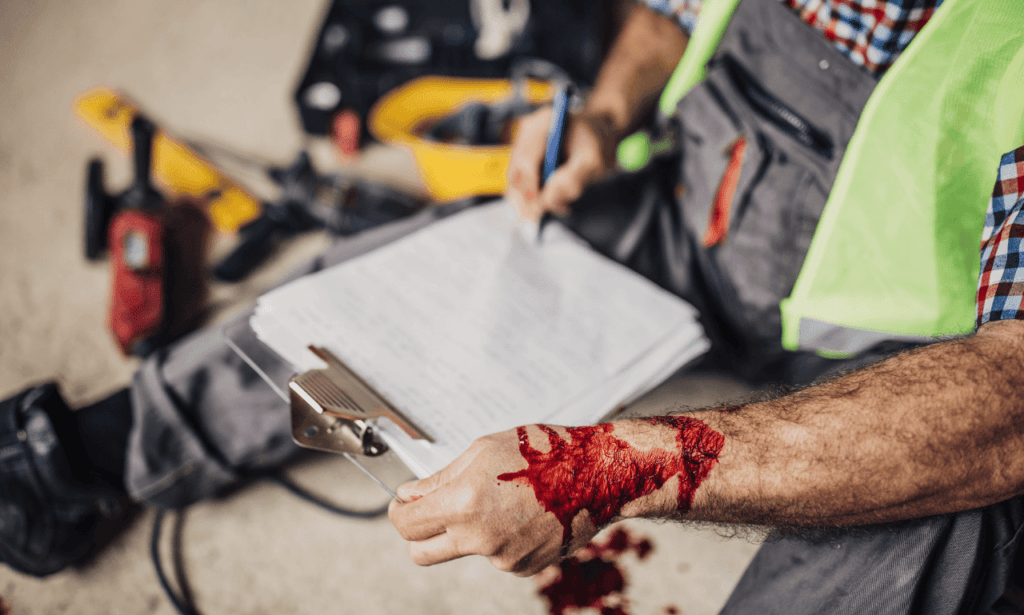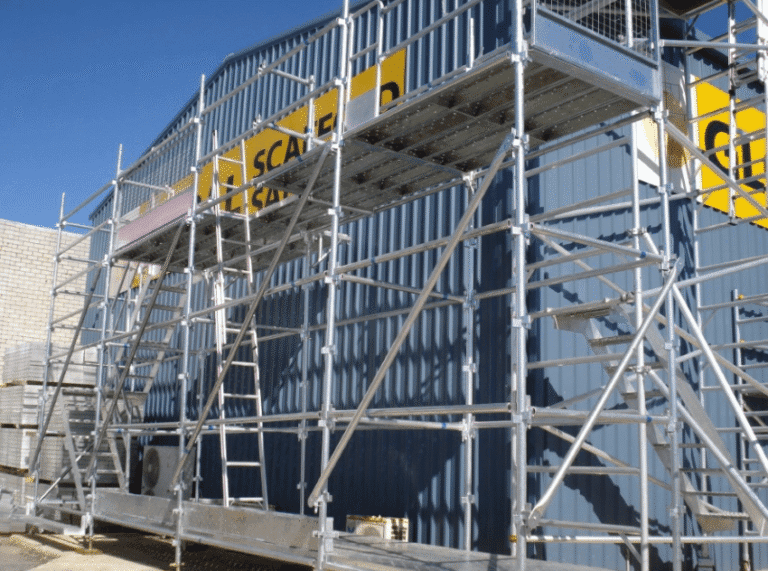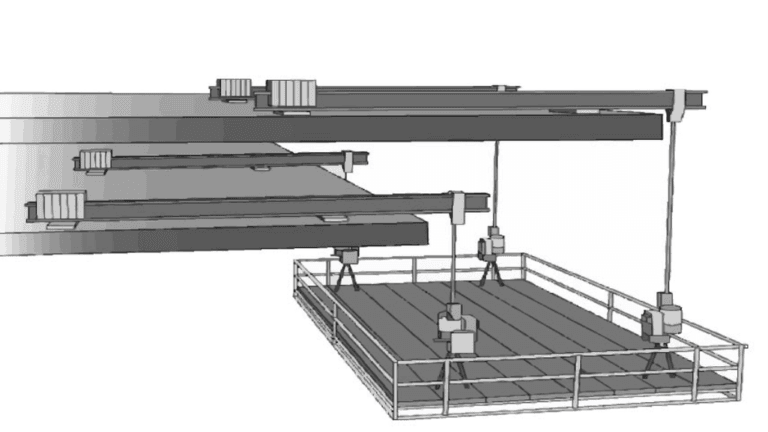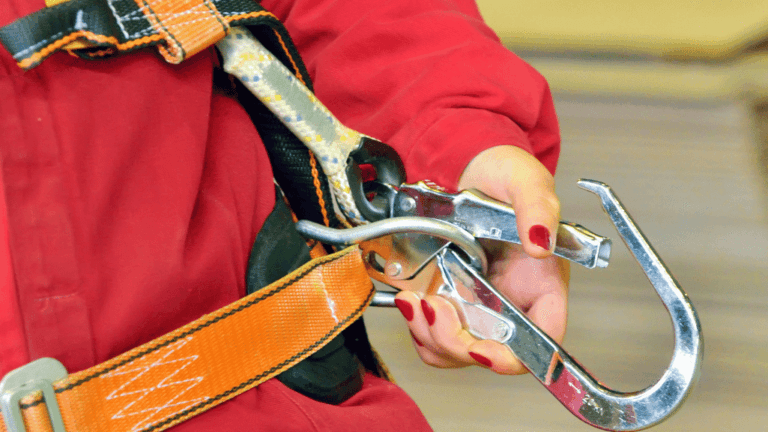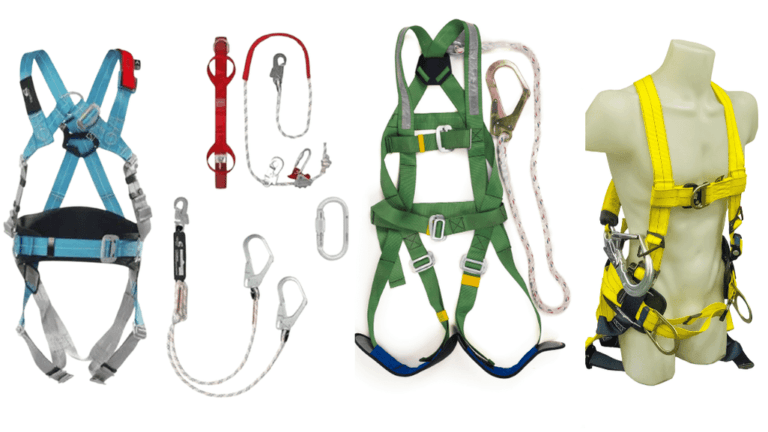Phone:
(+65)8319-0742
In today’s fast-paced work world, keeping employees safe is key. A safety and health program is the foundation for workplace safety. It helps manage risks and follow rules. This way, employers can protect their most important asset – their workers.
OSHA says 75% of employers must train their workers on safety within a year. This shows how crucial it is to tackle hazards and teach workers how to stay safe. A strong safety program not only keeps workers safe but also boosts productivity and morale.
A good safety program includes steps like finding and fixing hazards, training, and always looking to improve. By updating the program often, employers can keep up with changes and make sure it works well. Research shows that safe workplaces have 30% less turnover than unsafe ones (source: OSHA).
In certain jobs, like construction, there are extra rules to follow. For example, using boom lifts needs strict safety rules and training to avoid accidents. Employers must know the latest rules and best practices to keep their workplaces safe.
Key Takeaways
- A safety and health program is crucial for protecting employees, managing risks, and ensuring regulatory compliance.
- OSHA mandates that 75% of employers provide safety and health training within one year of establishing a program.
- Comprehensive programs should include hazard identification, prevention, training, and continuous improvement.
- Compliant organizations experience lower turnover rates and increased productivity.
- Industry-specific considerations, such as the safe use of aerial work platforms, require adherence to strict guidelines and proper training.
The Importance of Workplace Safety and Health
Workplace safety and health are key to any successful company. By focusing on employee well-being, businesses can create a positive work environment. This environment boosts productivity, morale, and ensures regulatory compliance. Investing in safety and health programs protects workers and helps the business thrive.
Protecting Employees’ Well-being
The main goal of workplace safety is to protect employees from injuries, illnesses, and accidents. By identifying and reducing hazards, employers can make a safe work environment. This shows a real commitment to the health and safety of everyone in the company.
Here are some interesting facts:
| Metric | Value |
|---|---|
| Percentage of workplace accidents prevented through risk assessment and management initiatives | 68% |
| Employee participation rates in training sessions related to identifying hazards and responding to them | 82% |
| Utilization rates of Personal Protective Equipment (PPE) within the EHS industry | 93% |
Maintaining Regulatory Compliance
Employers must provide a safe work environment that follows all laws and standards. Not doing so can lead to fines, legal troubles, and damage to the company’s reputation. Strong workplace safety and health programs help companies meet these requirements and avoid penalties.
“Workplace safety is not just a moral responsibility; it is a legal requirement that every employer must take seriously.” – Sarah Thompson, EHS Consultant
Enhancing Productivity and Morale
A safe and healthy work environment not only keeps employees safe but also boosts productivity and morale. When workers feel valued and safe, they are more engaged and motivated. This leads to better work quality, fewer absences, and a positive company culture.
- Companies with strong safety cultures have 24% lower turnover rates and 71% fewer lost workdays due to injuries.
- Employees who feel their well-being is a priority are 89% more likely to recommend their company as a great place to work.
Key Components of a Comprehensive Safety and Health Program
A good safety and health program in the workplace needs a few key parts. These include management leadership, employee involvement, finding and preventing hazards, and training. By focusing on these areas, companies can make sure their workers are safe and create a safety-first culture.
Management Leadership and Employee Involvement
For a safety program to work, both management and employees must be on board. Management should show they care about safety by setting clear goals and giving resources. Employees should also play a big role by sharing their ideas and helping to find and fix safety problems.
“Safety is a team effort. It requires the dedication and collaboration of management and employees alike.” – Jane Smith, Safety Manager
Hazard Identification and Assessment
Finding and checking for hazards is key to keeping the workplace safe. This means looking for risks like physical dangers, equipment problems, and harmful substances. Job safety analyses (JSAs) help by breaking down jobs into steps to spot hazards and find ways to prevent them.
- Incident frequency and severity
- Potential for severe injuries
- Newly established or modified jobs
- Infrequently performed jobs
Hazard Prevention and Control
After finding hazards, it’s important to take steps to prevent and control them. This includes using engineering, administrative controls, and personal protective equipment (PPE). Engineering controls change equipment or processes to reduce risks. Administrative controls change work practices and policies. PPE is the last defense against remaining hazards.
| Hazard | Prevention and Control Measures |
|---|---|
| Power line proximity | Maintain minimum clearance distances: Up to 50kV AC = 10 feet, Over 50kV AC to 200 kV = 15 feet, All other voltages = 75 feet |
| Hand-arm vibration | Use low-vibration tools, implement work-rest cycles, and provide anti-vibration gloves |
| Jobsite fires | Properly store flammable and combustible materials, provide fire extinguishers, and conduct fire safety training |
Training and Education
Good training and education are crucial for keeping employees safe. OSHA says training should happen within a year of starting a safety program. Training should cover many topics, like fall safety, breathing protection, electrical safety, and how to use equipment safely. Regular updates and checks make sure employees know the latest safety rules.
By focusing on management leadership, employee involvement, finding and preventing hazards, and training, companies can build a strong safety program. This helps reduce risks and keeps the workplace safe for everyone.
Developing a Safety and Health Program Best Practices
Creating a solid safety and health program is key for employee well-being and a productive workplace. By using best practices, companies can make a program that tackles specific hazards and builds a strong safety culture. Success comes from documenting the program well, setting clear goals, assigning tasks, and updating it as needed.
It’s vital to make the safety program fit your company’s unique needs. Every workplace faces different hazards. Employers should do a detailed risk assessment to find and fix these problems. Getting input from all employees is crucial, as they know the workplace best.
Setting clear, achievable goals is another important step. Goals should be specific, measurable, achievable, relevant, and timely (SMART). This helps track progress and make needed changes. Examples of SMART goals include:
- Reducing workplace accidents by 20% in a year
- Getting 30% more employees to join safety training by the end of the quarter
- Doing monthly safety checks to spot and fix hazards
It’s also key to assign clear roles in the safety program. Every employee should know their part in keeping the workplace safe. This includes safety managers, supervisors, and frontline workers. This approach helps create a culture where safety is everyone’s job.
A successful safety and health program is not a static document but rather a living, breathing entity that evolves with the organization.
Keeping the program up to date is crucial. As new hazards appear or the workplace changes, the program must adapt. This might mean updating policies, training, or equipment. By always improving the program, companies can stay safe and healthy for all employees.
Implementing Effective Hazard Prevention Strategies
To keep the workplace safe and healthy, it’s key to use good hazard prevention strategies. These include engineering controls, administrative controls, and personal protective equipment (PPE). Employers can lessen workplace risks and protect their workers with these methods.
Engineering Controls
Engineering controls are the first step in preventing hazards. They aim to remove or lessen hazards at their source. Examples are machine guards, ventilation systems, and ergonomic workstations. These measures help reduce accidents and injuries.
According to the National Institute for Occupational Safety and Health, these controls are the best way to protect workers.
Administrative Controls
Administrative controls are about changing work practices to reduce hazards. This includes adjusting work schedules and providing safety training. For example, employers might limit work in extreme temperatures.
These controls also mean regular safety checks and keeping equipment in good shape. This prevents accidents caused by equipment failure.
Personal Protective Equipment (PPE)
When other controls aren’t enough, PPE is used. PPE protects workers from hazards that can’t be removed. Examples are hard hats and safety glasses.
Employers must give the right PPE and teach workers how to use it. Choosing PPE depends on the hazards in the workplace.
Good hazard prevention needs a proactive and ongoing effort. Employers should always check and update their safety measures. Getting feedback from employees helps find and fix hazards. This way, companies can make a safer work place, lower accident risks, and boost morale.
At HAKI, we know how important worker safety is on construction sites. Our HAKI Safe range focuses on fall prevention and safety, keeping workers, the public, and our team safe.
Using effective hazard prevention strategies is a legal and moral duty for employers. By using engineering, administrative controls, and PPE, companies can build a safe culture. This shows their commitment to their employees’ well-being.
Training and Education: Empowering Employees
Effective safety training and education are key to a strong safety program. By teaching employees how to work safely, companies can build a safety-focused culture. This not only keeps workers safe but also boosts productivity, morale, and follows the law.
Providing Comprehensive Safety Training
A good safety training program should cover many topics. It should fit the needs of the company and its workers. This includes learning about site hazards, emergency procedures, and how to use protective gear.
When planning safety training, remember these facts:
- Good health and safety training is crucial for a safety-focused culture.
- The “Work Safe, Work Smart” curriculum was made and tested by the Minnesota Department of Health from 1997 to 2000. It was funded by the National Institute for Occupational Safety and Health (NIOSH).
- Later, over 4,000 students in 18 schools and 20 control schools were involved in an evaluation. This was supported by NIOSH from 2000-2004.
- The lessons fit into classes like social studies, health, or agriculture. They help teach about risk reduction.
- Lessons usually take 50 minutes. Some might need more time over several class periods.
Promoting a Culture of Safety
Creating a safety culture is more than just training. It’s about ongoing communication, getting employees involved, and leading by example. Encourage workers to report hazards and near-misses. Involve them in making and enforcing safety rules.
Changing safety culture means changing behaviors, hearts, and minds.
Here are some ways to promote a safety culture:
| Practice | Description |
|---|---|
| Regular safety meetings | Hold safety meetings often to talk about hazards, review incidents, and share safety tips. |
| Employee recognition programs | Give rewards to employees who show they care about safety. This encourages others to do the same. |
| Management involvement | Make sure managers and supervisors are part of safety efforts. They should lead by example and put safety first. |
| Continuous improvement | Always check and update safety training. Make sure it’s current and effective, using feedback and best practices. |
By investing in safety training and promoting a safety culture, companies can empower their employees. This leads to a safer, healthier, and more productive workplace.
Incident Reporting and Investigation
Incident reporting and investigation are key to a safe work environment. Reporting incidents quickly helps spot hazards and prevent future problems. It’s important to encourage reporting, conduct detailed investigations, and take corrective actions.
Encouraging Prompt Reporting
Creating a safe space for reporting incidents is crucial. This allows for quick incident investigation and action. Employees need to know what to report, like accidents and near misses. Places with high accident rates, like construction sites, should focus on reporting.
Conducting Thorough Investigations
After an incident, a detailed investigation is needed. It should find the root causes without blaming anyone. Reports should be accurate and complete, including details like injuries and witnesses.
- General details of the incident
- Setting and circumstances
- Injuries sustained
- Witnesses
- Treatment provided
- Damages incurred
- Sequence of events
- Actions taken during the incident
Investigators should note what they saw and heard at the scene. They should also list everyone involved and their outcomes. Clinical notes should go in the patient’s chart, not the incident report.
Implementing Corrective Actions
After investigating, actions must be taken to avoid future incidents. These can include changing equipment or procedures. The goal is to keep the workplace safe.
| Corrective Action | Description |
|---|---|
| Engineering controls | Modifying equipment, tools, or the work environment to eliminate or reduce hazards |
| Administrative controls | Changing work procedures, policies, or training to minimize risks |
| Personal protective equipment | Providing appropriate PPE to protect employees from hazards |
By taking these steps, a company shows it cares about safety. Being honest about incidents can also help in legal matters.
Incident reporting leads to immediate reinforcement of actions, facilitates communication on hazards and threats, and aids in the continuous improvement of processes.
By focusing on reporting, investigation, and action, employers can make their workplaces safer for everyone.
Emergency Preparedness and Response
Creating a detailed emergency plan is key to keeping employees safe and business running smoothly. The OSHA Education Center says disasters can shut down businesses for good, up to 40%. A good plan should cover evacuation, shelter-in-place, and how to communicate during emergencies.
Employers must train their teams well and hold drills often. These drills help spot plan weaknesses and teach roles in emergencies. The Federal Emergency Management Agency (FEMA) suggests planning for three days without basic services.
Having an emergency kit is vital. It should have enough water and food for three days, plus other key items like:
- First-aid supplies
- Flashlights and extra batteries
- Battery-powered or hand-crank radio
- Prescription medications
- Important documents (e.g., identification, insurance cards)
National Preparedness Month in September is a great time to focus on getting ready for emergencies. Businesses and groups can share tips and volunteer efforts. The www.Ready.gov website has free resources in many languages, helping more people get ready.
“By failing to prepare, you are preparing to fail.” – Benjamin Franklin
Some groups, like seniors and people with disabilities, face special challenges in emergencies. There are special resources to help them stay safe. Planning ahead can greatly reduce risks for these groups.
| Year | Weather-related Deaths | Weather-related Injuries |
|---|---|---|
| 2017 | 592 | 4,270 |
Weather events can be deadly. In 2017, 592 people died and 4,270 were hurt due to weather. A solid emergency plan can save lives and protect businesses.
Continuous Improvement and Program Evaluation
To keep a safety and health program working well, it’s key to always look for ways to get better. Regular checks on how the program is doing help a lot. This way, companies can make their safety efforts even stronger and keep their workers safe.
Doing safety audits and inspections often is a big part of getting better. These checks spot dangers and areas that need work. By looking closely at the workplace and safety habits, companies can fix problems before they cause harm. Also, tracking things like injury rates and how well training goes helps see if the program is working. Using tools like cantilever scaffolding can help make work safer and improve these numbers.
Incorporating Employee Feedback
Listening to what workers say is also very important. They know the real challenges and dangers they face. So, their ideas are very helpful in making things better.
Having regular safety talks, surveys, and open lines of communication lets workers share their thoughts. By really listening to and using what workers say, companies show they care about safety. This makes the workplace safer and more engaging for everyone.
Improving and checking the program is a never-ending job that needs everyone’s help. By focusing on safety checks, tracking important numbers, and listening to workers, companies can make real changes. This leads to a safer and healthier place for everyone.





